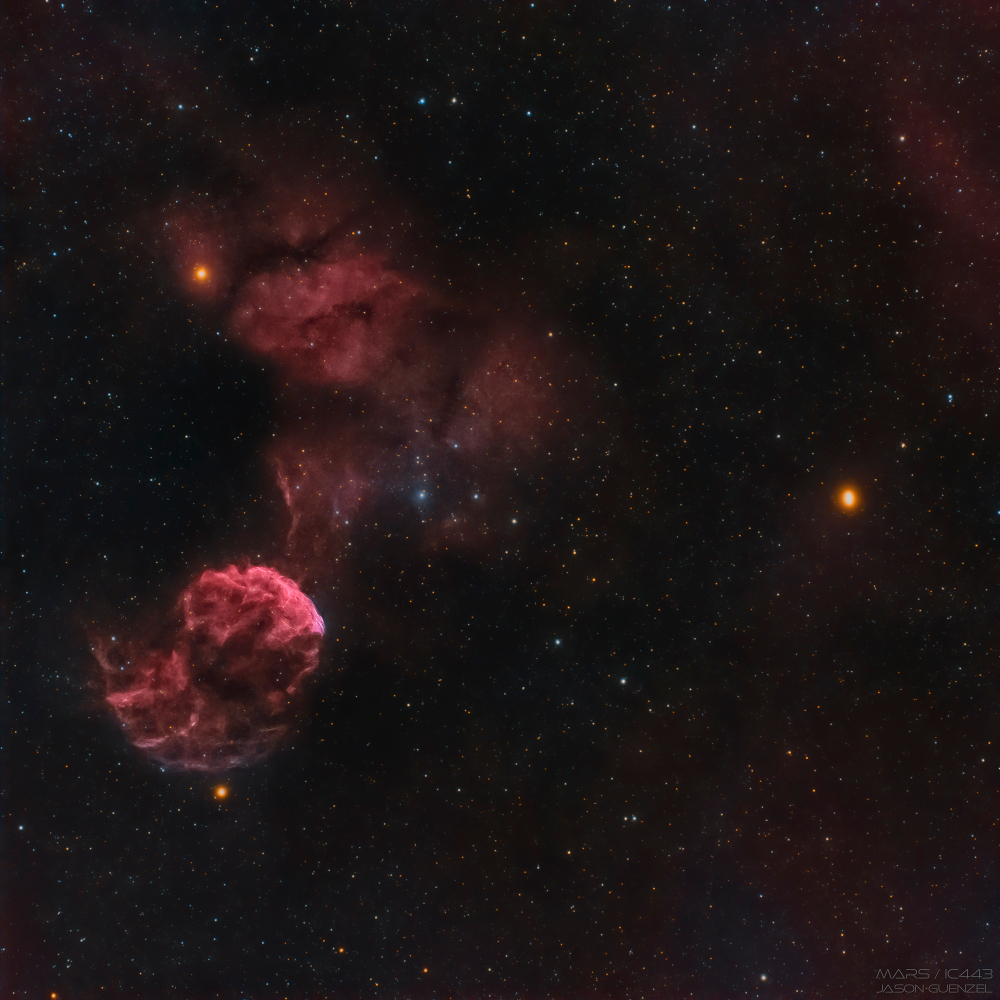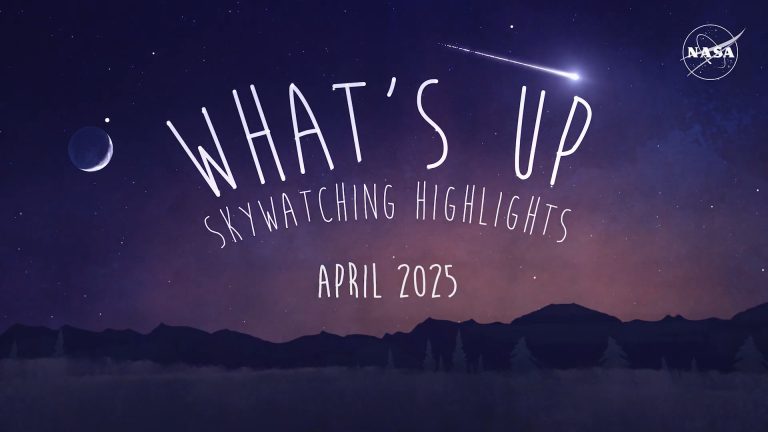2021年05月19日
The Jellyfish and Mars
Image Credit & Copyright: Jason Guenzel
Explanation: Normally faint and elusive, the Jellyfish Nebula is caught in this alluring scene. In the telescopic field of view two bright yellowish stars, Mu and Eta Geminorum, stand just below and above the Jellyfish Nebula at the left. Cool red giants, they lie at the foot of the celestial twin. The Jellyfish Nebula itself floats below and left of center, a bright arcing ridge of emission with dangling tentacles. In fact, the cosmic jellyfish is part of bubble-shaped supernova remnant IC 443, the expanding debris cloud from a massive star that exploded. Light from that explosion first reached planet Earth over 30,000 years ago. Like its cousin in astrophysical waters the Crab Nebula supernova remnant, the Jellyfish Nebula is known to harbor a neutron star, the remnant of the collapsed stellar core. Composed on April 30, this telescopic snapshot also captures Mars. Now wandering through early evening skies, the Red Planet also shines with a yellowish glow on the right hand side of the field of view. Of course, the Jellyfish Nebula is about 5,000 light-years away, while Mars is currently almost 18 light-minutes from Earth.
Tomorrow’s picture: pixels in space
水母星云与火星
影像提供与版权: Jason Guenzel
说明: 这张迷人的夜空影像,呈现了黯淡且通常难以捉摸的水母星云。在这片望远镜视野里,水母星云的本尊在中左下方,其舞动的云脊状明亮触须从右上向左下方伸展。它下方及上方的泛黄亮星,则分别是双子足部附近的红巨星井宿一及銊。这片水母状的云气,其实是气泡状超新星遗迹IC 443的一部份,为大质量恒星爆炸所产生的扩张碎片云, 而来自这例超新星爆炸的闪光,大约在3万多年前才传到地球。就像它在天文海洋里的同类–超新星遗迹蟹状星云一样,IC 443内也藏着一颗星核崩塌后所形成的中子星。于今年4月30日拍摄这幅望远镜影像时,同时也记录了在影像右侧散发泛黄辉光,目前正缓缓移过初入晚夜空的火星。不过,水母星云离我们约5,000光年远,而火星目前距离地球只有18光分。 (Mu and Eta Geminorum 井宿一及銊)
明日的图片: pixels in space







